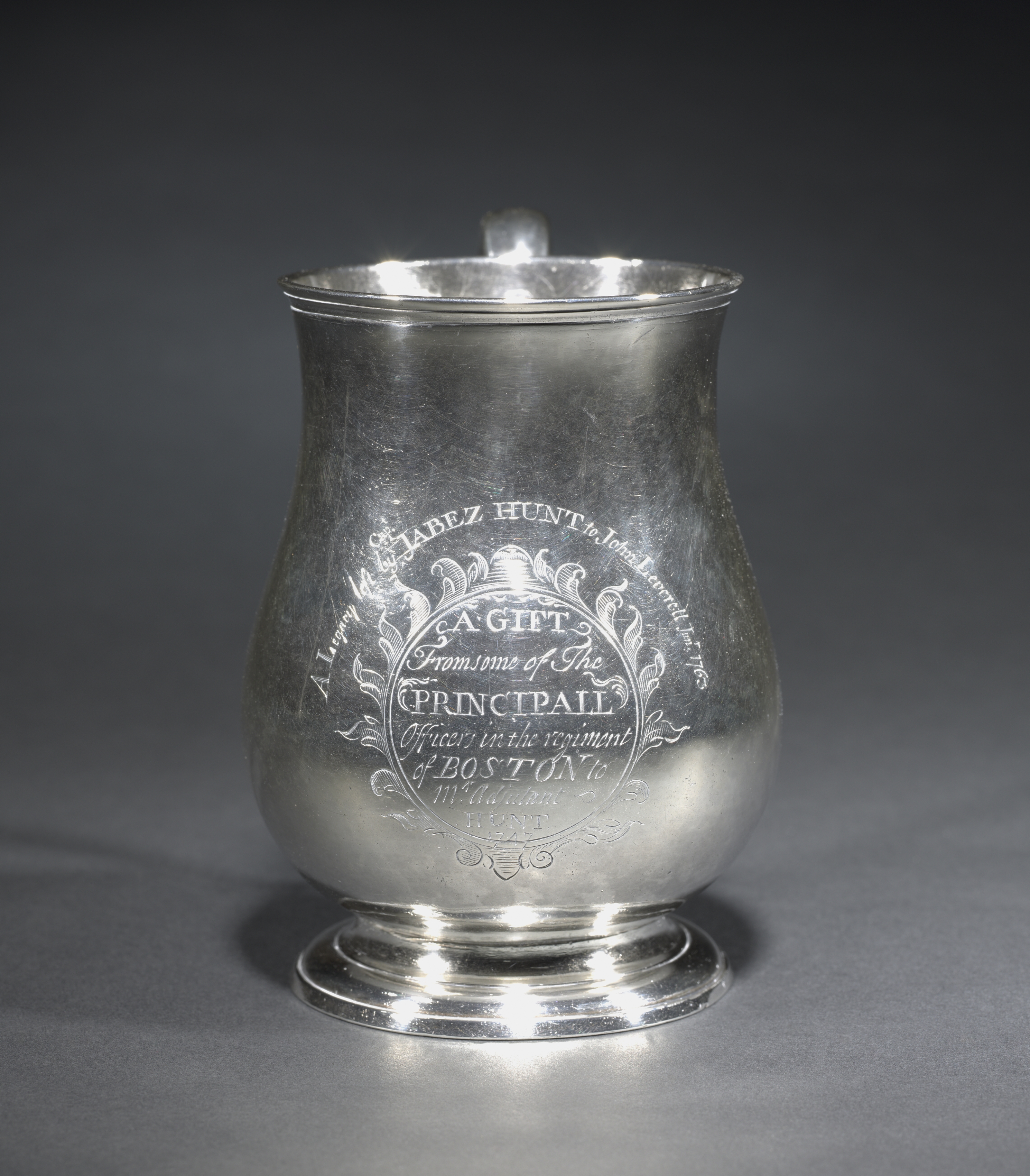The Cleveland Museum of Art
Collection Online as of April 25, 2024

Cann
1747
fabricated by
(American, 1702–1758)
Overall: 13.7 cm (5 3/8 in.); with handle: 14 cm (5 1/2 in.); without handle: 9.9 cm (3 7/8 in.)
Gift of Hollis French 1940.225
Location: not on view
- Silver naturally tarnishes over time when sulphur-containing compounds in the air come into contact with the metal, forming black silver sulphide. Tarnish removal on museum objects should not be done frequently, since polishing and chemical removal result in a minor loss of the surface material each time. Silver objects like this one are cleaned with a high purity, conservation-grade calcium carbonate, or chalk, applied with cotton swabs and lint-free cloths. After tarnish removal, the objects are displayed in sealed casework or storage bags with tested materials that will not cause further tarnishing. Occasionally, clear lacquers are applied to silver objects that cannot be enclosed. The controlled museum environment, with regulated temperature and humidity, also helps to ensure the longevity of the polished silver surface. Finally, nitrile gloves are used when handling to prevent finger oils and salts from further tarnishing the clean surfaces.
- Johnston, Phillip M. Catalogue of American Silver: The Cleveland Museum of Art. Cleveland: Cleveland Museum of Art, 1994. mentioned & reproduced 79 library.clevelandart.org
- {{cite web|title=Cann|url=false|author=Jacob Hurd|year=1747|access-date=25 April 2024|publisher=Cleveland Museum of Art}}
Source URL:
https://www.clevelandart.org/art/1940.225